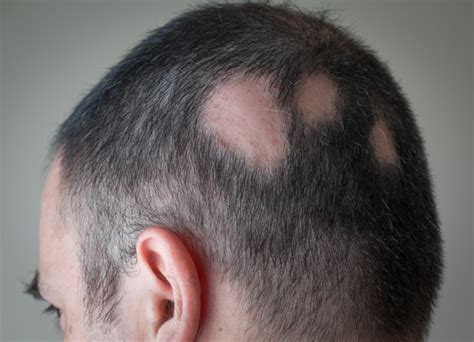What are bald head patches?
Bald head patches, also known as alopecia areata, are areas of hair loss that can range in size from small, round patches to large, irregular areas. They can occur anywhere on the scalp, but are most commonly found on the crown or temples.

What causes bald head patches?
The exact cause of bald head patches is unknown, but it is thought to be an autoimmune disorder. This means that the body’s immune system mistakenly attacks the hair follicles, causing them to stop producing hair.
Who is at risk for bald head patches?
Bald head patches can affect anyone, but they are more common in women than in men. They can also be more common in people with certain medical conditions, such as thyroid disease or diabetes.
What are the symptoms of bald head patches?
The main symptom of bald head patches is hair loss. The hair loss can be sudden or gradual, and it can range from a few small patches to complete baldness. Other symptoms of bald head patches can include itching, burning, or tingling on the scalp.
How are bald head patches diagnosed?
Bald head patches are diagnosed based on a physical examination of the scalp. Your doctor will look for areas of hair loss and may ask you about your symptoms. He or she may also order blood tests to rule out other medical conditions.
How are bald head patches treated?
There is no cure for bald head patches, but there are treatments that can help to slow down or stop the hair loss. These treatments include:
- Topical medications, such as minoxidil or anthralin
- Injectable medications, such as corticosteroids or cyclosporine
- Oral medications, such as finasteride or dutasteride
- Laser therapy
- Surgery
What are the complications of bald head patches?
Bald head patches can lead to emotional distress and social anxiety. They can also increase the risk of sunburns and skin cancer.
How can I prevent bald head patches?
There is no sure way to prevent bald head patches, but there are some things you can do to reduce your risk, such as:
- Managing stress
- Eating a healthy diet
- Getting regular exercise
- Avoiding harsh hair products
- Protecting your scalp from the sun
When should I see a doctor about bald head patches?
You should see a doctor if you notice any sudden or unexplained hair loss. Early diagnosis and treatment can help to slow down or stop the hair loss.
How can I cope with bald head patches?
If you have bald head patches, there are a number of things you can do to cope, such as:
- Join a support group
- Talk to a therapist
- Wear a wig or hairpiece
- Use scalp micropigmentation
- Get a tattoo
Additional resources
Table 1: Symptoms of bald head patches
| Symptom | Description |
|---|---|
| Hair loss | Sudden or gradual loss of hair in patches |
| Itching | Itching, burning, or tingling on the scalp |
| Scaly patches | Red, scaly patches on the scalp |
| Nail changes | Pitting or ridging of the nails |
Table 2: Causes of bald head patches
| Cause | Description |
|---|---|
| Autoimmune disorder | The body’s immune system mistakenly attacks the hair follicles |
| Genetic factors | Bald head patches can run in families |
| Medical conditions | Certain medical conditions, such as thyroid disease or diabetes, can increase the risk of bald head patches |
| Medications | Some medications, such as chemotherapy drugs, can cause hair loss |
| Stress | Stress can trigger bald head patches in some people |
Table 3: Treatments for bald head patches
| Treatment | Description |
|---|---|
| Topical medications | Medications applied to the scalp, such as minoxidil or anthralin |
| Injectable medications | Medications injected into the scalp, such as corticosteroids or cyclosporine |
| Oral medications | Medications taken by mouth, such as finasteride or dutasteride |
| Laser therapy | A type of light therapy that can help to stimulate hair growth |
| Surgery | Surgery to remove the bald patches |
Table 4: Tips for coping with bald head patches
| Tip | Description |
|---|---|
| Join a support group | There are many support groups available for people with bald head patches |
| Talk to a therapist | A therapist can help you to cope with the emotional distress of bald head patches |
| Wear a wig or hairpiece | A wig or hairpiece can help to cover up bald head patches |
| Use scalp micropigmentation | Scalp micropigmentation is a procedure that can create the appearance of hair on bald patches |
| Get a tattoo | A tattoo can be used to cover up bald head patches |
